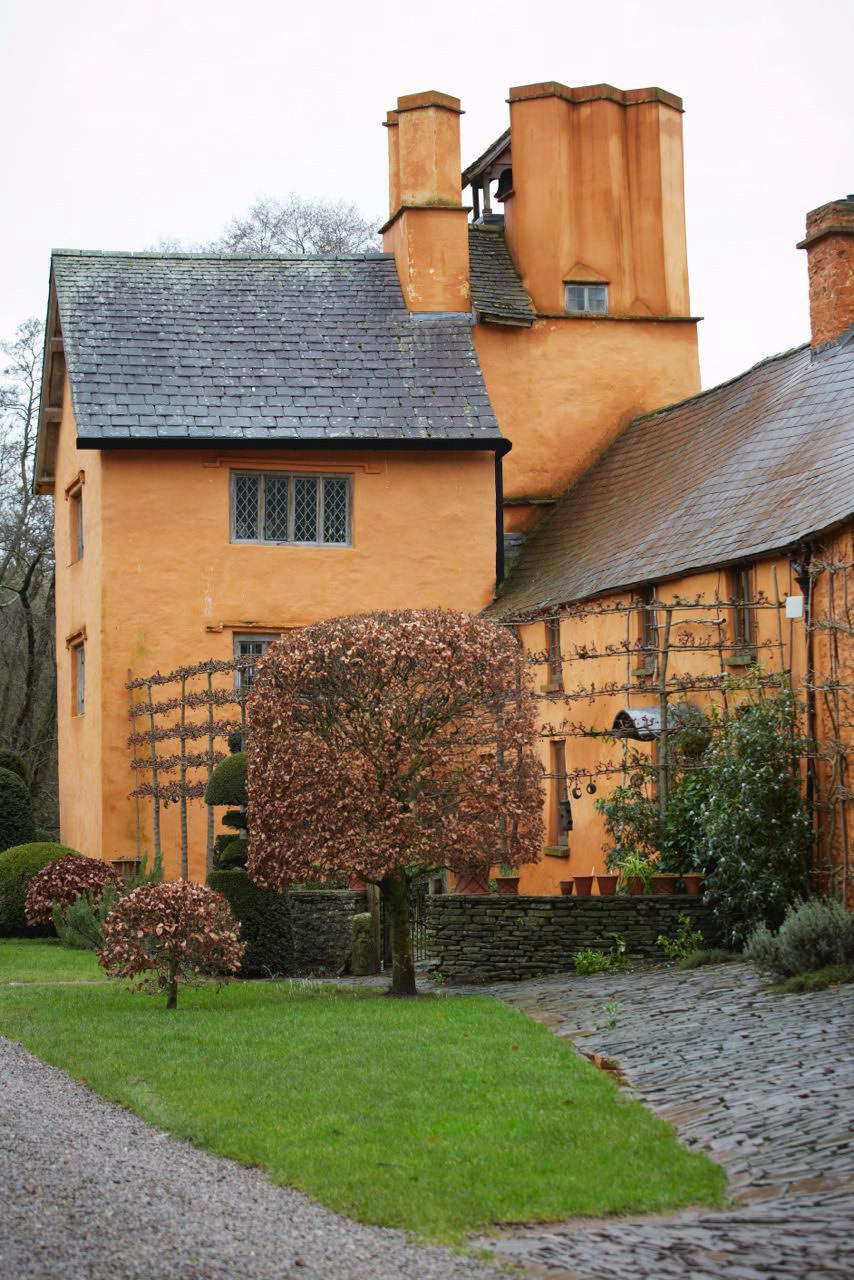
Formal French gardens come to mind; Marie Antoinette in her milkmaid’s costume looked just right against a row of trees trained to grow as flat as a scene on a theater backdrop. Pleaching adds a a strong architectural element to any garden.
Photography by Britt Willoughby-Dyer.
Visible behind a copper-leaved beech, at Allt-y-bela pleached crabapple trees are trained against hazel poles.
Start with young, pliable trees with very straight trunks. You can buy young trees that already have been trained against a frame, giving them a head start.
What trees are best to pleach?
At Allt-y-Bela, head gardener Steve Lannin shapes the crabapples when the trees are dormant in winter.
In the UK, nurseries such as Majestic Trees and Insta Hedge sell pleached specimens. In the US, growers such as Raintree Nursery and Yamagamis Nursery sell espaliered trees trained to grow flat.
What are some sources for pleached or espaliered trees?
Lannin cuts back new growth four or five buds above the basal rosette.
When trees are young, thin branches are flexible and can be bent and tied against a trellis or frame. It is better to cut them off and wait for more shoots.
How do I train pleached trees?
Pleached trees need regular haircuts; in winter, when they’re dormant and their structure is visible, is the best time to shape them.
How much maintenance is involved?
Maynard’s ornamental crabapple trees are Malus ‘Everesta’, a disease-resistant cultivar known for its profuse spring flowers.
To maintain the trees’ shape, Lannin trims off vertical shoots that would otherwise obscure the horizontal lines.